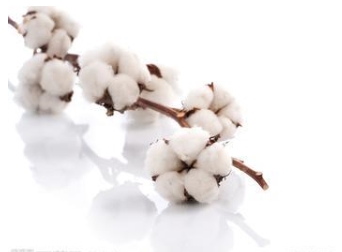 Impact of climate on the general reduction in cotton production in China On September 26, the Eighth Standing Committee of the Second Session of the Cotton Association of China and the National Cotton Situation Analysis Conference were held in Beijing. At the meeting, Si Xiangyu introduced the situation of cotton production this year. He pointed out that this year, in addition to the reduction in area, the unfavorable factors for cotton production are mainly the climate. The effects of low temperature during the early planting period and persistent high temperature and drought in July and August affected cotton production.
Impact of climate on the general reduction in cotton production in China On September 26, the Eighth Standing Committee of the Second Session of the Cotton Association of China and the National Cotton Situation Analysis Conference were held in Beijing. At the meeting, Si Xiangyu introduced the situation of cotton production this year. He pointed out that this year, in addition to the reduction in area, the unfavorable factors for cotton production are mainly the climate. The effects of low temperature during the early planting period and persistent high temperature and drought in July and August affected cotton production. Du Yu, director of the Agricultural Research Center of the Ministry of Agriculture, also pointed out that from the perspective of production, the Agricultural Research Center has monitored 250 cotton producing counties and this year its area has dropped by 4-8.4% to 67.4 million mu. The yield per unit area affected by the drought in the south is about 250 kg/seed, and less than 88 kg/seed cotton. The total output is more than 5.9 million tons. With the known ambush in Xinjiang, the national output is about 6.4 million tons.
Du Fu also said that from the market situation, the market outlook has two points that require special attention: First, although some countries have recently improved their indicators, there are still many uncertainties in the international market. Second, although domestic industrial indicators have increased, However, the start-up rate of textiles is not very optimistic. In addition, due to the pressure on stocks last year and the pressure of price increase, domestic demand in the market is cautiously optimistic.
When reserve cotton hits the issue of cotton storage that has not yet been targeted for the market’s general concern, Zhang Xianbin, Director of the Department of Economic Affairs of the National Development and Reform Commission also stressed that the current priority is to implement a temporary cotton purchasing and storage policy to prevent “circling cottonâ€, but When it comes to putting reserve cotton in line with market resources, the specific timing has not yet been decided.
According to the reporter's understanding, this year's cotton temporary storage and storage work was started on September 9 to stabilize the cotton production, business operators, and cotton business market expectations and protect the interests of cotton farmers.
With regard to the issue of deposit cotton, Zhang Xianbin said, "Delivery time depends on market resources. The relevant parties are closely monitoring the timing and related departments to study and decide."
It is reported that the precondition for the reserve cotton to be put into use is to fully meet the needs of the textile enterprises, and the price is determined according to the needs of the textile market and the stability of the market.
Zhang Xianbin also said that on the issue of cotton import quotas next year, the situation of production and sales will be clear after a special study. With regard to quota allocation, we will also study the issue of more equitable and fair solutions.
The stable and positive development of the textile industry and the price situation of cotton production directly affect the operation of the textile industry. At today’s cotton situation analysis meeting, Cao Xuejun, Director of Consumer Products Division of the Ministry of Industry and Information Technology, introduced the operation and development trend of the textile industry this year.
According to him, since the implementation of the cotton collection and storage policy, cotton prices have remained stable and have had a certain impact on the cotton spinning industry. However, this year's textile companies have improved their adaptability, the entire industry has been operating smoothly, and major economic indicators have improved.
From December this year to December, domestic and international demand remained relatively stable. The external demand for the United States EU was better than last year. Exports increased significantly. The end of the year was significantly better than the previous year. The main business income of the entire industry increased by about 12%. The indexes of cotton spinning companies are much better than last year, and they are also better than the average level of the textile industry. Although the impact of cotton spreads is not obvious from the indicators, the potential impact needs attention: First, investment, cotton spinning new projects dropped by 20%, The show has certain influence on the confidence of the industry. Second, the substitution of cotton continues to increase, including the substitution of cotton and the growth of imported cotton yarn. Third, the outward shift of cotton spinning capacity is evident.
In addition, Cao Xuejun also mentioned that in recent years, with the development of e-commerce, the sales of textiles on the Internet has increased dramatically, which has a great impact on the entire industry. According to statistics, last year, 300 billion textile products were purchased online, accounting for 30% of all online shopping.
Woven Fabric,Shirt Woven Fabric,Shirt Fabric Textile,Suit Sleeve Lining Fabric
Shaoxing Cornfield Textile Trading Co,.Ltd , https://www.cornfieldtextile.com